Introduction
Pluto, once the ninth planet of our solar system, is now classified as a dwarf planet in the Kuiper Belt. It lies 5.9 billion kilometers (3.7 billion miles) from the Sun, making it a distant, icy world. Discovered in 1930 by Clyde Tombaugh, Pluto has a faint, reddish hue due to organic compounds on its surface. For example, its thin atmosphere contains nitrogen, methane, and carbon monoxide, which freeze when farthest from the Sun. Consequently, this makes Pluto a dynamic world despite its small size. Moreover, Pluto is much smaller than Earth, with a diameter of 2,377 kilometers (1,477 miles). Its mass is only 0.002 times Earth’s, making it tiny compared to other planets. However, its unique traits sparked debates about its status. As of 2025, new data from the New Horizons mission continues to reveal Pluto’s secrets. Thus, this article explores its formation, characteristics, surface, moons, reclassification, and legacy.
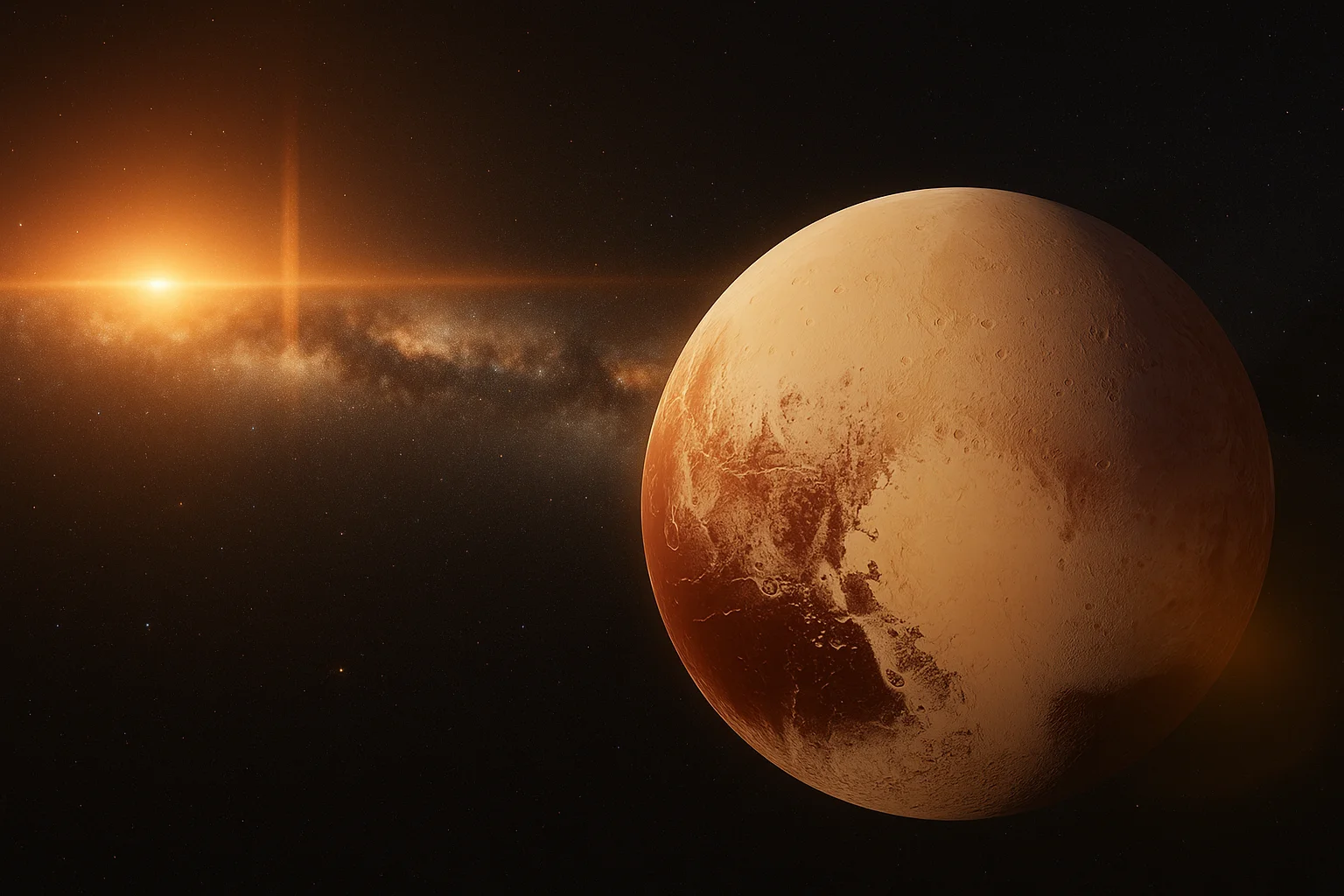
Formation and Characteristics of the Dwarf Planet
Pluto formed 4.5 billion years ago during the solar system’s early days, alongside other Kuiper Belt objects. Initially, it began as a protoplanet in the cold, outer regions, where ices could condense. Over time, ice and rocky material merged under gravity’s pull. For instance, water ice, methane, and nitrogen ice dominate its composition, mixed with rocky material. Additionally, Pluto has a rocky core, making up about 70% of its mass, surrounded by a mantle of water ice. The core, consequently, generates little heat due to its small size. Meanwhile, its surface is covered with frozen nitrogen, methane, and carbon monoxide. Furthermore, Pluto’s mass is only 0.002 times Earth’s, ranking it as a small dwarf planet. It also has a highly elliptical orbit, taking 248 Earth years to circle the Sun, with a 17-degree tilt. Therefore, Pluto’s characteristics highlight its distinct nature as a Kuiper Belt object.
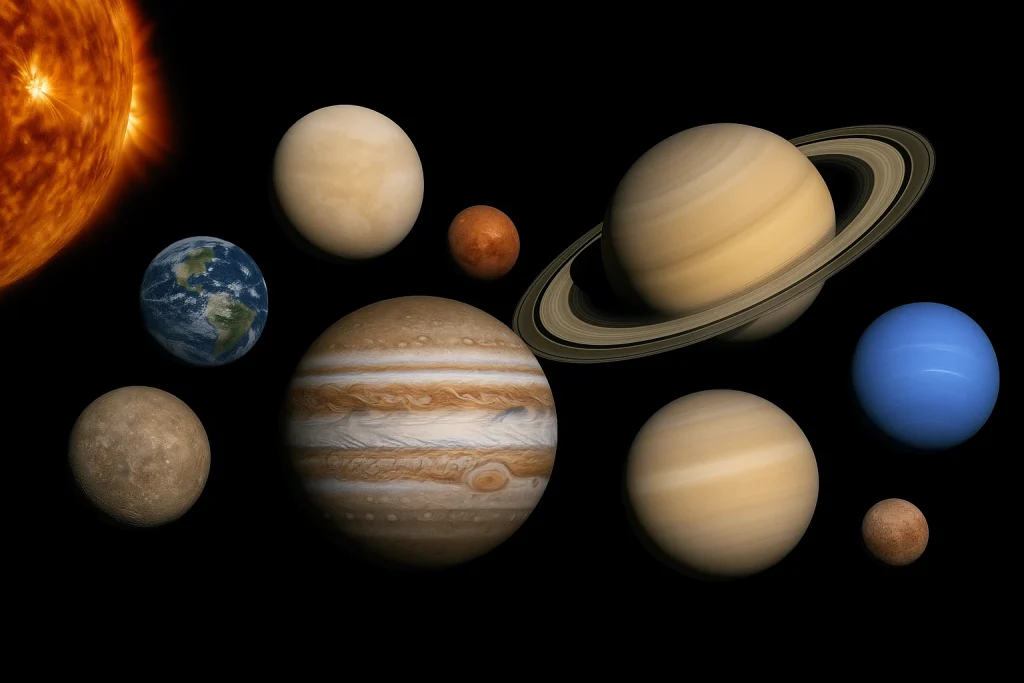
Surface and Atmosphere
Pluto’s surface is a mix of icy plains, rugged mountains, and deep craters, as revealed by New Horizons in 2015. For example, the heart-shaped Tombaugh Regio, named after Pluto’s discoverer, features a smooth, bright plain of nitrogen ice. Moreover, mountains of water ice rise up to 3,500 meters (11,500 feet), likely formed by geologic activity. These features, in fact, suggest a complex history for such a small world. In 2015, New Horizons spotted a thin atmosphere of nitrogen, methane, and carbon monoxide, extending 200 kilometers above the surface. However, this atmosphere freezes and collapses when Pluto is farthest from the Sun, a cycle tied to its 248-year orbit. Additionally, the surface temperature averages -229°C (-380°F), making it one of the coldest known places. Despite this, Pluto shows signs of seasonal changes, with methane ice shifting across its surface. As a result, its surface and atmosphere reveal a surprisingly active world.
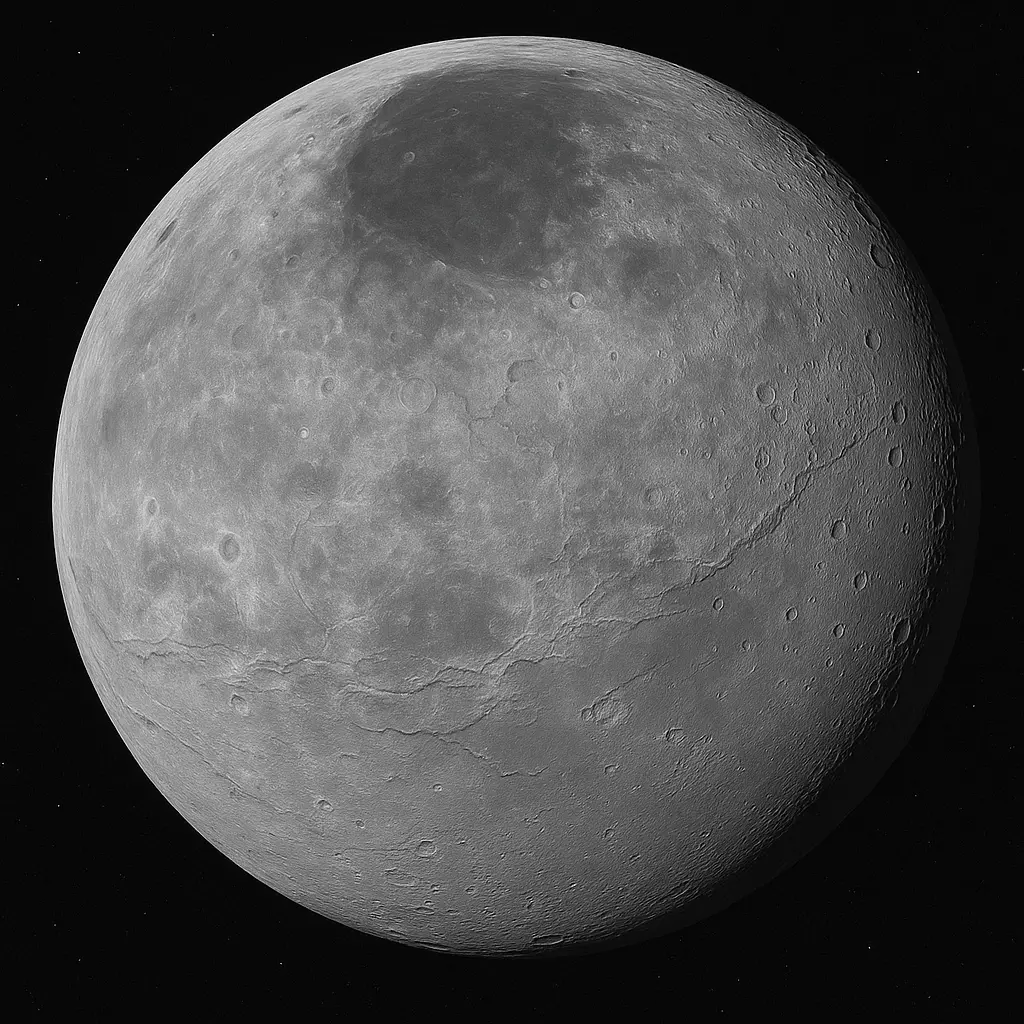
Moons and Rings of the Dwarf Planet
Pluto has five known moons as of 2025, with Charon being the largest and most significant. For instance, Charon, discovered in 1978, has a diameter of 1,212 kilometers (753 miles), nearly half of Pluto’s size. This makes them a binary system, as they orbit a shared center of gravity. Thus, Charon’s surface, marked by craters and canyons, contrasts with Pluto’s smoother regions. Additionally, smaller moons—Styx, Nix, Kerberos, and Hydra—range from 10 to 55 kilometers in diameter, discovered between 2005 and 2012. Voyager 2, for example, never visited Pluto, but New Horizons imaged these moons, revealing irregular shapes. Meanwhile, Charon has a reddish polar cap, likely from captured methane. Pluto has no confirmed ring system, though scientists speculated about faint rings from micrometeorite impacts. Moreover, the lack of rings may be due to its small size and weak gravity. Hence, Pluto’s moons form a unique system in the Kuiper Belt.
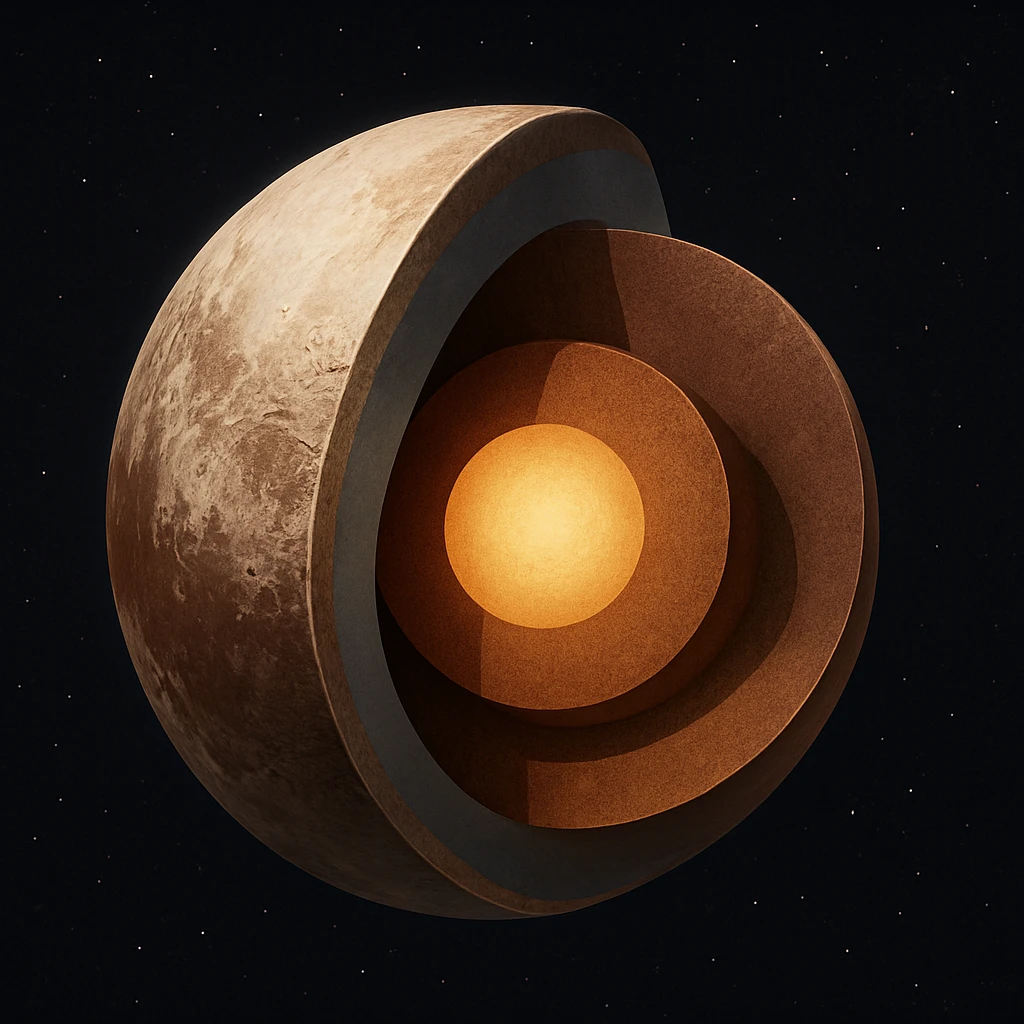
Reclassification and Status
Pluto’s status as the ninth planet was questioned as more Kuiper Belt objects were found in the 1990s. Specifically, in 2005, the discovery of Eris, a body slightly larger than Pluto, sparked debate among astronomers. On August 24, 2006, the International Astronomical Union (IAU) redefined what a planet is, requiring it to clear its orbit of debris. For example, Pluto shares its orbit with other Kuiper Belt objects, failing this criterion. Additionally, it was reclassified as a dwarf planet, alongside Eris, Ceres, Haumea, and Makemake. This decision, moreover, caused public outcry, as many felt an emotional attachment to Pluto’s planetary status. However, the reclassification highlighted the diversity of objects in our solar system. By 2025, New Horizons data has shown Pluto’s complexity, supporting its unique role. It, for instance, revealed a geologically active surface, challenging expectations. As a result, Pluto’s reclassification reshaped our understanding of dwarf planets.
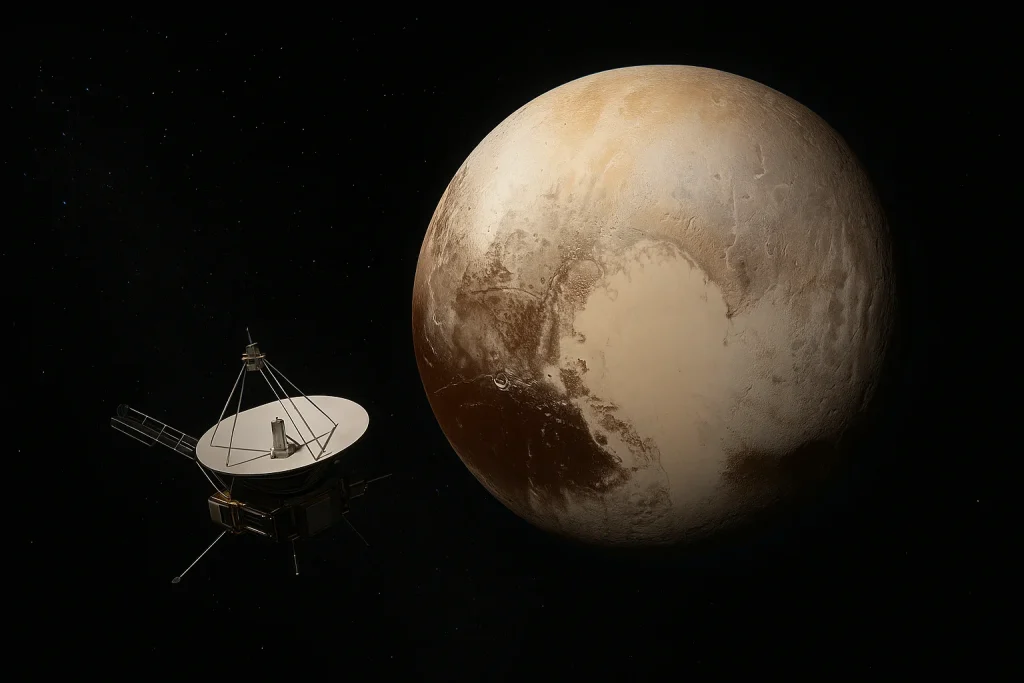
Conclusion
Pluto remains a captivating world, despite its reclassification as a dwarf planet. Initially, it formed 4.5 billion years ago, evolving into a complex body in the Kuiper Belt. For example, its icy surface and thin atmosphere show surprising activity. Moreover, moons like Charon and its binary nature add intrigue to its study. At 5.9 billion kilometers from the Sun, Pluto is a challenging target for exploration. However, New Horizons’ 2015 flyby provided groundbreaking data on its surface and moons. As of 2025, this data continues to reveal Pluto’s secrets, such as its geologic activity. Consequently, Pluto’s story highlights the evolving nature of planetary science in our understanding. Thus, Pluto inspires wonder about the distant, icy worlds beyond our planets.
Leave a Reply